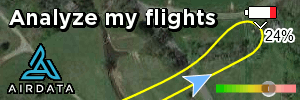Just published. A few make sense but then a load of duplication and slight difference from the EU rulings for no obvoious reason.
Common theme was "a majority of responders were negative to this proposal but we're going to do it anyway)
Direct Remote ID moving to the far more sinister network remote id (ie unlimited range, permanent surveillance) over time. Also moving from geo-awareness to mandated geo-fencing.









